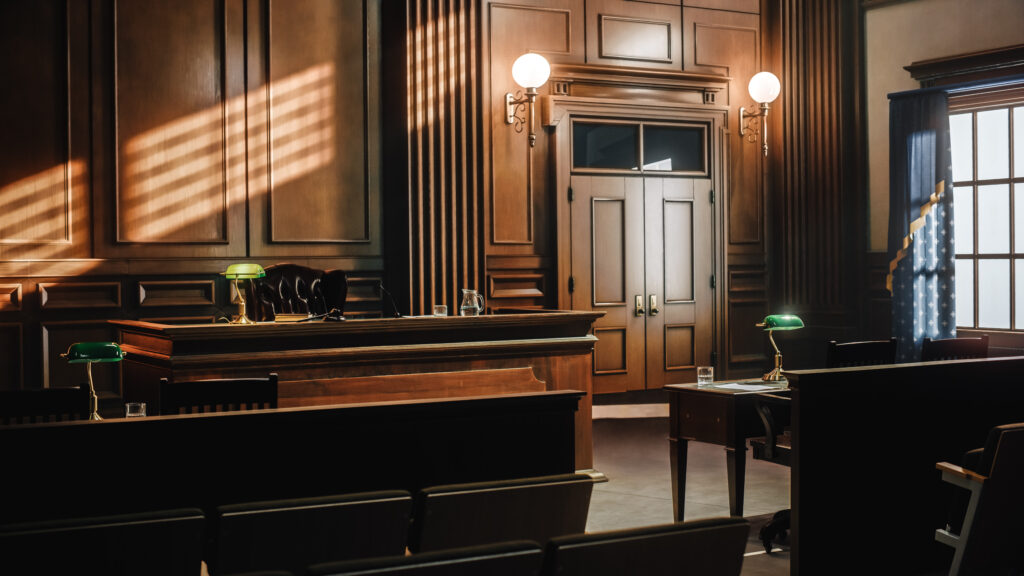Fund for Client Protection
The purpose of the Fund for Client Protection is to promote public confidence in the administration of justice and the integrity of the legal profession.
History
The Utah Supreme Court established the Fund for Client Protection on April 9, 1977 in order to provide meaningful cost reimbursement to clients injured by a lawyer’s dishonest acts. In 1990, the Committee adopted the Rules for Lawyers’ Fund for Client Protection. The rules were updated to add Licensed Paralegal Practitioners (LPPs) in 2019.

Purpose
The purpose of the Fund for Client Protection is to promote public confidence in the administration of justice and the integrity of the legal profession by reimbursing losses caused by the dishonest conduct of lawyers and LPPs admitted and licensed to practice law in this state.
The Fund for Client Protection Committee reviews claims to the Fund for Client Protection to make sure they are valid and meet the eligibility criteria stated in the rules of the program. When several valid cases are available, hearings are scheduled to determine the amount of award, if any, that will be granted to any claimant.
Every lawyer and LPP has an obligation to the public to participate in the collective effort of the Bar to reimburse persons who have lost money or property as a result of the dishonest conduct of another lawyer or LPP.

Fund for Client Protection Assessment
Rule 14-904 gives the Bar authority to assess lawyers and LPPs to maintain the Fund at sufficient levels to pay eligible claims. The Bar is required to maintain a Fund balance of at least $200,000. Before annual licensing begins, the Bar calculates how much each lawyer and LPP must pay to maintain the Fund balance. After the Supreme Court approves the assessment amount, the Bar adds the assessment amount to the annual licensing renewal form so lawyers can pay the amount during the renewal process. The assessment averages $5 to $7 but has been as high as $20 depending on claims made to the Fund.
Accessing the Fund
Rule 14-910 governs who may access the fund and when.
A claim to the Fund for a loss must meet the following criteria:
- The loss must be caused by the dishonest conduct of the lawyer or the licensed paralegal practitioner;
- The loss must have arisen out of the course of a lawyer/client, licensed paralegal practitioner/client, or fiduciary relationship between the lawyer or the licensed paralegal practitioner and the claimant and by reason of that relationship; and
- The claim to the Fund must be filed within one year after the date of the final order of discipline, the date of death, or the date of the order of disability.
Exceptions
Certain claims are not reimbursable by the Fund. For example,
- Any assigned claims, third party claims, claims of heirs or estates of deceased claimants;
- Any claims where the client has failed to exhaust all other reasonably available services or recovery methods; and
- Any investment losses, as distinguished from legal fees, which might reasonably be characterized as a pyramid or Ponzi scheme.
For a full list of exceptions, please see Rule 14-910(d).

The Lawyer and LPP Discipline Process
The Utah Office of Professional Conduct (OPC) is charged with the lawyer and LPP discipline process, including the placement of a lawyer or LPP on disability status. Please see OPC’s website for more information on the discipline process.
Questions about Accessing the Fund
For questions about accessing the fund, please see Rule 14-910, or you may contact Christine Critchley at christine.critchley@utahbar.org.
Rules
- Rule 14-901. Definitions.
- Rule 14-902. Purpose and scope; establishment of Fund.
- Rule 14-903.Committee membership and terms; Board approval of Committee recommendations.
- Rule 14-904. Funding.
- Rule 14-905. Segregated bank account.
- Rule 14-906. Committee meetings.
- Rule 14-907. Duties and responsibilities of the committee.
- Rule 14-908. Conflict of interest.
- Rule 14-909. Immunity.
- Rule 14-910. Eligible claim.
- Rule 14-911. Procedures and form; responsibilities of claimants to complete form.
- Rule 14-912. Processing claims.
- Rule 14-913. Payment of reimbursement.
- Rule 14-914. Reimbursement from the fund as a matter of grace.
- Rule 14-915. Restitution and subrogation.
- Rule 14-916. Confidentiality.
Annual Reports
